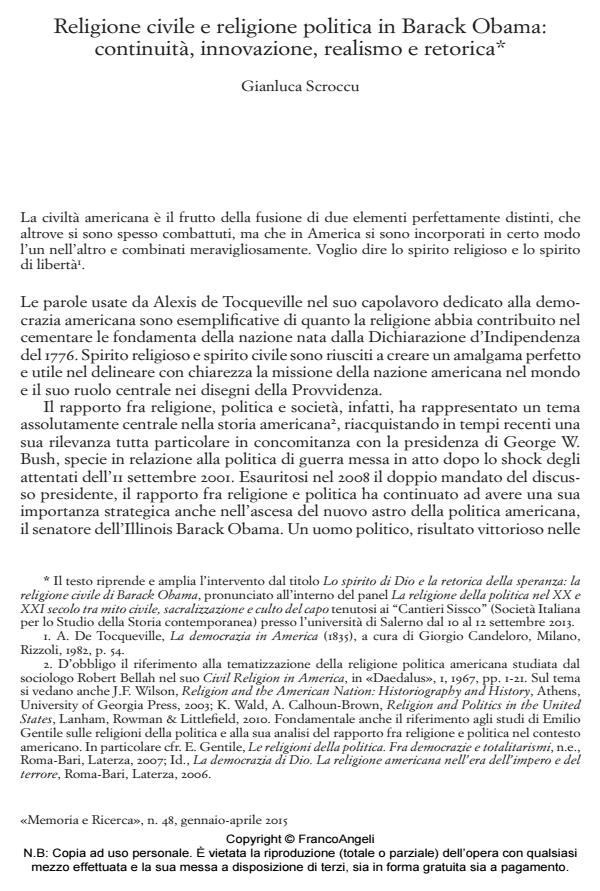Religione civile e religione politica in Barack Obama: continuità, innovazione, realismo e retorica
Titolo Rivista MEMORIA E RICERCA
Autori/Curatori Gianluca Scroccu
Anno di pubblicazione 2015 Fascicolo 2015/48
Lingua Italiano Numero pagine 18 P. 165-182 Dimensione file 111 KB
DOI 10.3280/MER2015-048010
Il DOI è il codice a barre della proprietà intellettuale: per saperne di più
clicca qui
Qui sotto puoi vedere in anteprima la prima pagina di questo articolo.
Se questo articolo ti interessa, lo puoi acquistare (e scaricare in formato pdf) seguendo le facili indicazioni per acquistare il download credit. Acquista Download Credits per scaricare questo Articolo in formato PDF

FrancoAngeli è membro della Publishers International Linking Association, Inc (PILA)associazione indipendente e non profit per facilitare (attraverso i servizi tecnologici implementati da CrossRef.org) l’accesso degli studiosi ai contenuti digitali nelle pubblicazioni professionali e scientifiche
The article considers how Barack Obama has utilised civil religion in his political career since the election to the White House, with particular attention to his religious formation. Through exploration of Obama’s writings and speeches, the paper analyze how in the political debate, and especially in his reflections on the dilemmas and contradictions of international relations, Obama has used religion to assert and claim a midline approach of government. It focuses on the influence of his political theology by Rev. Jeremiah A. Wright and the black church, white liberal Protestantism, his mother Ann Dunham’s skepticism, the pragmatism and the Niebuhr’s work. One aim of this paper is to underline how the religious impulse, in the Obama’s political views, has become consistent with the ethics of a pluralistic democracy. But these innovative, inclusive and national vision did not obtain all of his objectives, especially in the second presidential term because of international instability and the weakening of its leadership.
Parole chiave:Civil religion, Barack Obama, United States, Pragmatism, pluralistic democracy, Reinhold Niebuhr
Gianluca Scroccu, Religione civile e religione politica in Barack Obama: continuità, innovazione, realismo e retorica in "MEMORIA E RICERCA " 48/2015, pp 165-182, DOI: 10.3280/MER2015-048010